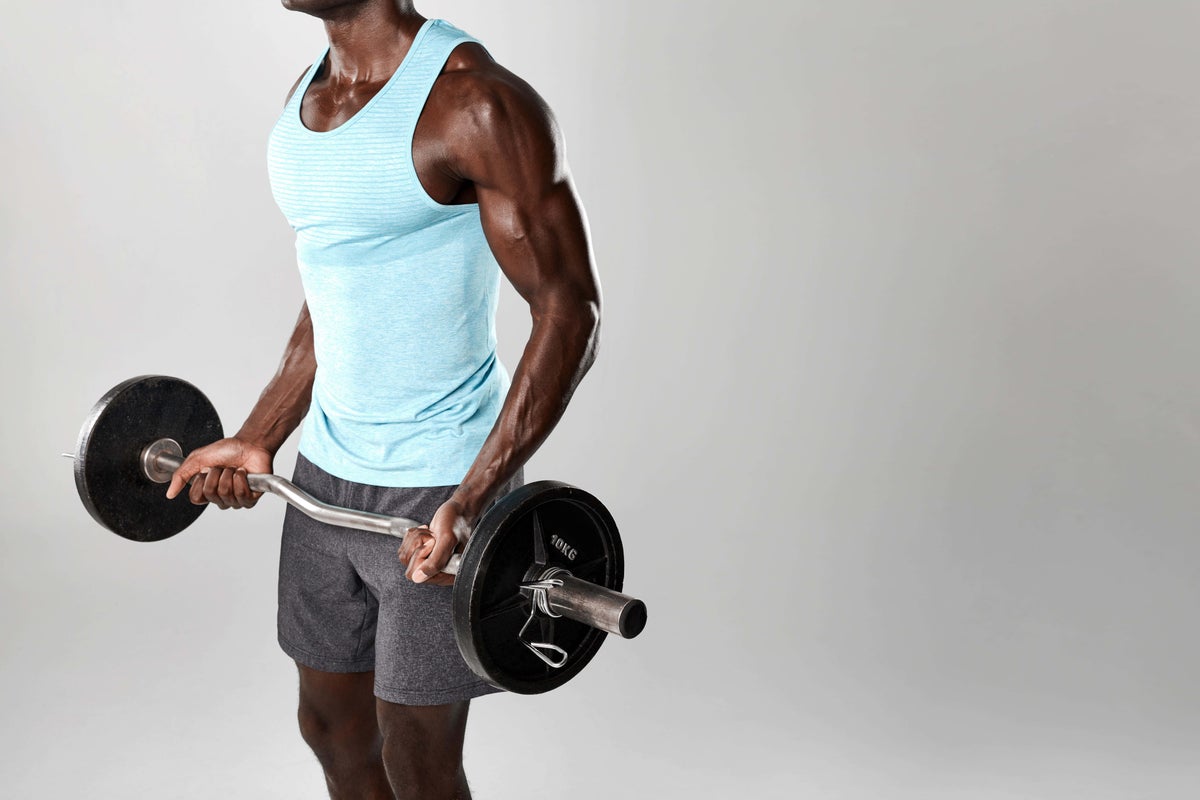
The term ‘lifting’ may dominate when we talk about building strength in the gym – but could bringing weights back down actually be what’s best for you?
New research from Edith Cowan University found a particular type of muscle contraction was most effective at increasing muscle strength and size – and rather than the focus being on lifting weights, it was lowering them that gleaned the fastest results.
The study saw three groups perform different types of dumbbell curls, twice a week for five weeks (as well as a control group who did none of the exercises). Those who only lowered the weights saw the same muscle improvements as participants who both raised and lowered them – despite doing just half the number of reps.
So, if you’re short on gym time, it could it be worth factoring in plenty of lowering actions in your strength routines. And while we may throw the phrase ‘lifting weights’ around, when it comes to muscle growth, it’s not all about the lifting part…
“Our body can generate greater forces under eccentric conditions [from lowering weights] than under either isometric [static] or concentric [lifting] contractions. This allows us to tear down those muscle fibres, especially when working at the full range of motion on exercises,” says Martena David, personal trainer at Gymbox (gymbox.com).
“This also allows us to utilise the eccentric and concentric phases of each exercise effectively, to help break down, repair and rebuild muscle fibres.
“Working in the eccentric phase gives you room to work with tempo efficiently – a really effective way to tear down muscle fibres, to then allow them to recover and rebuild,” David explains.
“Similarly, working in the lowering phase strengthens tendons as well as muscles, resulting in less risk of injury throughout day-to-day life activities. You’re able to focus on the movement of the exercise, therefore utilising your muscles effectively.”
How can you add lowering weights into your workout?
David says: “You can work on eccentric phases on both compound moves like squats, deadlifts and bench presses and isolation exercises like bicep curls.
“You will notice you are most likely feeling the impact and effectiveness of eccentric contraction in isolation exercises like bicep curls and leg extensions, where you can really focus on lengthening and contracting the muscle you are trying to target,” she adds.
“When isolating a muscle, it’s easier to overload and challenge that muscle with tempo in the eccentric phase.”
How do you know you’re doing it safely?
If you’re new to working out with weights, it’s always best to start with guidance from a professional, to make sure you’re doing it safely. Check with your doctor before starting any new exercise regime if you have any health conditions or injuries.
“When it comes to selecting weights, David says it’s important to ask yourself: “Can you safely and effectively carry out the exercise at that weight for the rep range, whilst maintaining form and not relying on momentum?
“If not, lower the weight and focus on the movement first. Focus on the tempo you’re working with; you still want to utilise breathwork during your lift and proper bracing of your core. Work in a safe range of motion, where you are not exceeding your range and unable to then control the weight,” she adds.
“You still want to feel challenged with those last few reps of a working set. Make sure you feel the contraction of the muscle you are trying to target, and that you’re being challenged.”
When it comes to the actual lowering motion, control is still important – you’re not just letting it drop.
David says to focus on “not exceeding your range of motion” – as this could result in injury – and “use a lighter weight to start, to see what feels comfortable for your mobility and range of motion. Slowly increase the weight or change the ratio of the tempo,” she adds.







